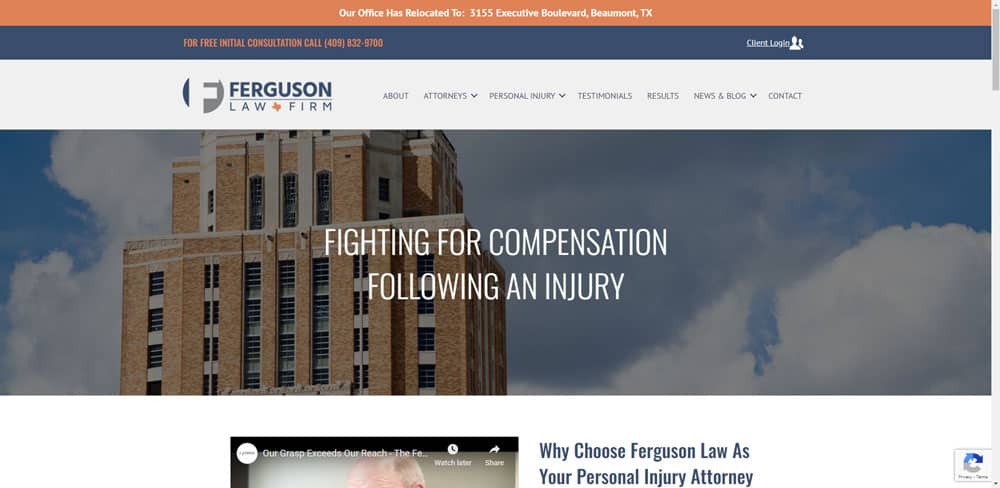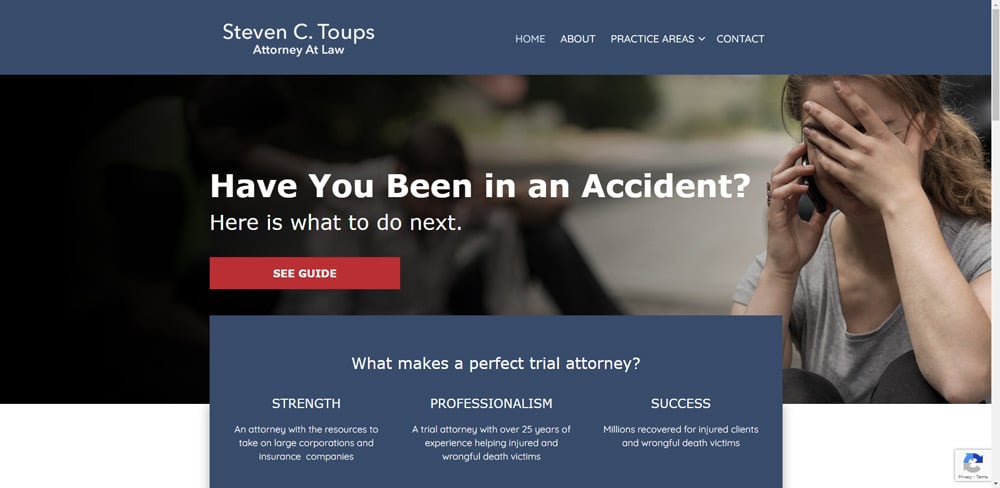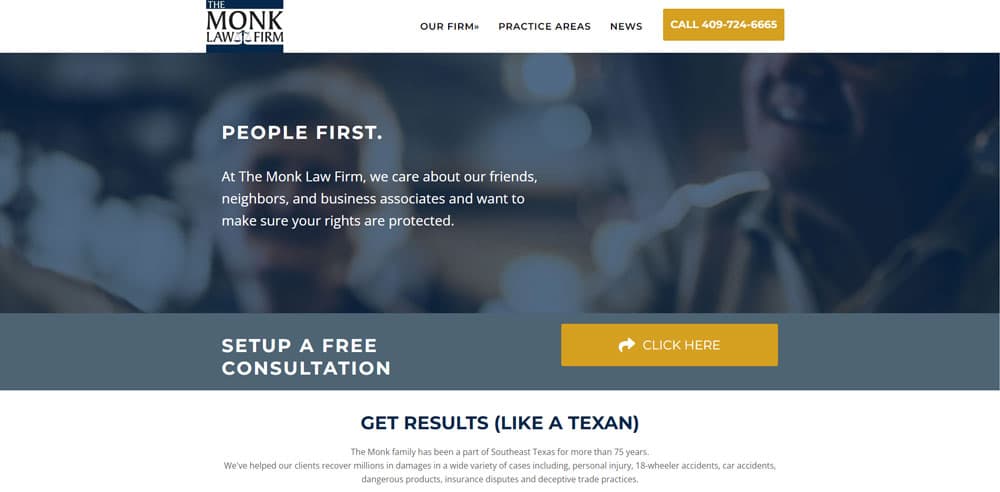Did you know that digital accessibility and design accessibility, as well as accessibility testing, are crucial for websites to ensure reasonable accessibility and equal access and usability for individuals with disabilities? In fact, non-compliance with ADA regulations can have serious consequences, including legal action and damage to a company's reputation. It is important for businesses to ensure that their websites are compliant with ADA regulations to avoid legal issues and protect their reputation as a public accommodation for people with various disabilities. It's a startling reality that many businesses overlook.
Implementing ADA compliance measures not only helps in meeting legal requirements but also offers numerous benefits for a compliant website. Reasonable accessibility and accessibility testing are crucial in ensuring nondiscrimination and avoiding legal issues. By ensuring reasonable accessibility on your website through accessibility testing, you can greatly enhance the user experience, boost website traffic, and reach a wider target audience. This is not only beneficial for SEO purposes but also for optimizing your HTML structure. In today's digital age, accessible web design is essential to prioritize inclusivity and diversity. Programs and web designs should incorporate text alternatives to ensure accessibility.
So why wait? Take the necessary steps to ensure your website designs are ADA compliant. Implement programs and services that include an audit of your website to identify any accessibility issues. By following the rules of accessible web design, you'll create a welcoming online environment for people in the public. Additionally, you'll avoid potential legal troubles. Let's delve deeper into the world of compliant web designs and discover how they can positively impact your business. ADA compliance web design programs and services are essential for ensuring that your website meets the necessary accessibility standards.
Understanding ADA Compliance for Websites
ADA compliance refers to adhering to the rules set by the Americans with Disabilities Act (ADA) to make websites accessible for all users. This includes designing compliant websites and offering compliant services. Web design plays a crucial role in creating designs that are compliant with accessibility rules, ensuring equal access and usability for all people, including individuals with disabilities. By following these rules, web designers can create compliant designs for an inclusive online environment where people can navigate, interact, and consume content without any barriers.
To achieve ADA compliance, businesses must design websites that make web content perceivable, operable, and understandable for people with disabilities. This ensures that the websites are robust and can be easily used by individuals who require accommodations. Let's delve into each of these aspects:
Perceivable
Perceivability involves making sure that information presented on a website can be perceived by all people, including those who are compliant with accessibility standards. This is crucial for the success of any business as it ensures that every user can access and understand the content on the website. This means providing alternatives for non-text content such as images or videos through text descriptions or captions in web designs. People use these alternatives in website design. Using clear and consistent headings in website design helps people understand the structure of the content. Providing transcripts or audio descriptions for multimedia content ensures that people with hearing impairments can access the information effectively on a website design.
Operable
Operability focuses on ensuring that people can navigate and interact with the website easily. This includes implementing keyboard navigation support so that people who cannot use a mouse can still browse through the site seamlessly. Designers should also avoid using elements that may cause seizures or other physical reactions in people with photosensitivity or other sensitivities.
Understandable
Websites need to be designed in a way that is easy to understand for all people. Clear and concise language should be used throughout the site to ensure that people can easily understand the content. It is important to avoid jargon or complex terminology whenever possible, as this can confuse and alienate people. Providing instructions and feedback in a simple manner helps people comprehend how to use different features on the website effectively.
Robust
Robustness refers to building websites using technologies that are compatible across various devices and assistive technologies used by people with disabilities. This ensures that people using screen readers or other assistive devices can access and interact with web content seamlessly.
Understanding WCAG 2.1 guidelines is essential for people to achieve ADA compliance for websites. The Web Content Accessibility Guidelines (WCAG) provide a comprehensive framework to ensure that websites are accessible to all individuals, including people with disabilities. These guidelines cover various aspects of web design, including text alternatives for people, color contrast for people, keyboard accessibility for people, and more.
By following the WCAG 2.1 guidelines, web designers can create websites that are inclusive and accessible to all people. It is important to note that achieving ADA compliance is an ongoing process as technologies and user needs of people evolve over time. Regular audits and updates should be conducted to ensure continued compliance for people.
Achieving Better Conversions with Expert Landing Page Design Services
Are you struggling to generate leads and increase conversions for your business? Look no further! Our expert landing page design services are here to help you achieve better results. With our specialized knowledge in lead generation and conversion optimization, we can create a landing page that will captivate your visitors and turn them into valuable leads.
Lead Generation: Maximizing Your Potential
Lead generation is the lifeblood of any successful business. Our landing page design services focus on creating a visually appealing and user-friendly interface that encourages visitors to take action. By strategically placing call-to-action buttons, opt-in forms, and enticing offers, we ensure that every visitor has a clear path towards becoming a lead.
But it's not just about capturing contact information; it's about nurturing those leads into loyal customers. That's why we integrate an email marketing tool directly into your landing page design. This allows you to automate email campaigns, send personalized messages, and build relationships with your audience. By leveraging the power of email marketing, you can stay top-of-mind with potential customers and increase your conversion rate over time.
Testimonials: Building Trust and Credibility
In today's digital age, consumers are more skeptical than ever before. They want proof that your product or service delivers on its promises. That's where testimonials come in. Our landing page design services include strategically placing customer testimonials throughout the page to showcase real-life experiences and build trust with your visitors.
By featuring positive feedback from satisfied customers, you provide social proof that your offering is reliable and effective. This reassures potential leads that they are making the right decision by choosing your business over competitors. Testimonials act as powerful endorsements for your products or services, boosting confidence in visitors' minds and ultimately increasing conversions.
Newsletter Sign-ups: Staying Connected with Potential Customers
One of the key goals of a landing page is to capture visitor information, and one effective way to do this is through newsletter sign-ups. By offering valuable content or exclusive offers in exchange for an email address, you can build a list of leads that you can nurture and convert into paying customers.
Our landing page design services ensure that the newsletter sign-up form is prominently displayed on your page, making it easy for visitors to subscribe. We optimize the form by only asking for essential information, reducing friction and increasing the likelihood of sign-ups. With a growing list of engaged subscribers, you can regularly communicate with potential customers, share updates about your products or services, and drive sales.
Tailored Solutions for Businesses of All Sizes
Whether you run a small startup or manage a large corporation, our landing page design services are tailored to meet your specific needs. We understand that every business is unique and requires a customized approach. Our team takes the time to understand your target audience, industry trends, and business goals before creating a landing page that aligns with your brand identity.
We handcraft each element of your landing page design with precision and creativity. From color schemes and typography to layout and imagery, we ensure that every aspect reflects your brand's personality while maximizing conversions. Our expertise in marketing psychology allows us to create landing pages that resonate with visitors on an emotional level, compelling them to take action.
Don't let another visitor slip through the cracks!
Ready to Partner with Us so We can Grow Your Business?
Legal Implications and Cases Related to ADA Compliance
Several lawsuits have been filed against companies that failed to meet ADA compliance standards on their websites, impacting people. Courts have ruled in favor of plaintiffs, emphasizing the importance of website accessibility under the law. Being proactive in implementing ADA compliance measures can help businesses avoid costly litigation.
In recent years, there has been a surge in legal actions related to ADA compliance issues on websites. Title III of the Americans with Disabilities Act (ADA) prohibits discrimination against individuals with disabilities in places of public accommodation, including websites. As a result, businesses are now facing legal consequences if their websites do not meet accessibility standards.
Numerous companies across various industries have faced lawsuits for failing to provide accessible online experiences for individuals with disabilities. These cases serve as examples of the legal implications businesses may face when they neglect ADA compliance:
-
Domino's Pizza: In 2019, the Supreme Court declined to hear Domino's appeal after a blind man sued them for having an inaccessible website and mobile app. This decision reaffirmed that companies cannot ignore their digital accessibility obligations.
-
Winn-Dixie: A Florida federal court ruled that Winn-Dixie violated the ADA by having a website incompatible with screen reader software used by visually impaired individuals. The court ordered them to make their website accessible and pay the plaintiff's attorney fees.
-
Beyoncé: The famous singer was sued over her official website's lack of accessibility features for visually impaired users. While this case was eventually dismissed due to jurisdictional issues, it highlighted the increasing scrutiny placed on high-profile figures regarding web accessibility.

These examples demonstrate how courts are taking a strong stance on enforcing ADA compliance laws and ensuring equal access for all individuals online.
To avoid finding themselves embroiled in costly litigation, businesses should take proactive steps towards achieving ADA compliance:
-
Conduct regular accessibility audits: Regularly assess your website's accessibility using automated tools or hiring professionals to identify and address any issues.
-
Implement accessible design principles: Design your website with accessibility in mind from the beginning, ensuring compatibility with assistive technologies such as screen readers, keyboard navigation, and alternative text for images.
-
Provide alternative formats: Offer accessible alternatives like captions for videos, transcripts for audio content, and downloadable documents in accessible formats.
-
Train your team: Educate employees about ADA compliance requirements and provide training on how to create and maintain an accessible website.
By prioritizing ADA compliance, businesses can mitigate the risk of legal action while also enhancing their reputation as inclusive and socially responsible entities.
Designing Websites to Meet Web Accessibility Standards
Incorporating proper color contrast, clear typography, and intuitive navigation are key elements in designing an accessible website.Website owners must prioritize the needs of all users, including those with visual impairments or disabilities. By adhering to accessibility requirements, designers can create a compliant website that provides an inclusive user experience for everyone.
To ensure web accessibility, design accessibility should be at the forefront of every web designer's mind. One crucial aspect is color contrast. Using appropriate color combinations enhances readability for individuals with visual impairments or color blindness. For instance, pairing light text on a dark background or vice versa improves legibility. Designers should avoid using colors that are too similar or low in contrast as they may cause difficulties for certain users.
Clear typography is another essential factor in creating an accessible website. Choosing fonts that are easy to read and have sufficient spacing between letters and lines helps individuals with visual impairments comprehend the content more effectively. Designers should consider using larger font sizes for improved readability.
Intuitive navigation plays a significant role in enhancing accessibility on websites. Ensuring keyboard accessibility enables individuals who cannot use a mouse or touch screen to navigate through the site efficiently. This feature allows users to access all interactive elements and links using only their keyboard's tab key.
Providing alternative text descriptions for images is crucial in making web pages accessible to visually impaired users who rely on screen readers. Screen readers interpret these alternative texts and convey them audibly to provide context about the image being displayed. Designers should include concise yet descriptive alt-texts that accurately represent the image content.
Accessibility testing throughout the design process is vital to identify any potential issues and ensure compliance with web accessibility standards. Regularly testing websites using assistive technologies such as screen readers helps uncover any barriers faced by individuals with disabilities.
By incorporating these design considerations into their web designs, designers can create accessible websites that cater to a diverse range of users. Web accessibility not only benefits individuals with disabilities but also improves the overall user experience for all website visitors.
Let Our WordPress Experts Maximize Your Conversions
Importance of ADA Compliance in Web Design
Demonstrating Inclusivity and Respect
Prioritizing ADA compliance in web design is not just a legal requirement but also a reflection of inclusivity and respect towards individuals with disabilities. By ensuring that websites are accessible to everyone, regardless of their abilities, businesses and organizations demonstrate their commitment to embracing diversity and providing equal opportunities for all.
When websites are designed with accessibility in mind, they become more welcoming and inclusive spaces for individuals with disabilities. This can have a profound impact on the user experience, fostering a sense of belonging and empowerment. By making it easier for people with disabilities to navigate and interact with websites, companies show that they value every visitor's needs and perspectives.
Improving User Satisfaction and Engagement
Accessible design goes beyond meeting legal obligations; it enhances user satisfaction and engagement on websites by catering to diverse needs. When individuals encounter barriers while accessing online content, frustration arises, leading to an unpleasant experience that may discourage them from returning.
By implementing features such as alt text for images, captioning for videos, clear navigation menus, and keyboard-friendly interfaces, businesses can ensure that users of all abilities can fully engage with their website's content. This not only improves overall user satisfaction but also encourages increased time spent on the site, higher conversion rates, and positive word-of-mouth recommendations.
Enhancing Search Engine Optimization Efforts
Complying with accessibility standards not only benefits users but also enhances search engine optimization (SEO) efforts by improving website rankings. Search engines prioritize delivering relevant results to users based on various factors including website accessibility.
When a website is designed with ADA compliance in mind—using proper heading structures, descriptive link text, well-organized content—search engines can better understand its structure and content. Consequently, this can lead to improved visibility in search engine results pages (SERPs), driving organic traffic to the site.
Moreover, accessible web design often involves optimizing page load times, which is another important factor for SEO. Search engines favor websites that load quickly and provide a seamless user experience across devices.
What Our Clients Say
Making Web Content Accessible: Meeting ADA Requirements
Using headings correctly not only improves readability but also plays a significant role in ensuring web content meets ADA requirements. Properly structured headings help screen readers navigate through a webpage efficiently by providing an organized outline of its structure.
When creating headings, it is important to follow hierarchical order (H1-H6) and avoid skipping levels. This allows assistive technologies to interpret the content accurately and present it in a logical manner to visually impaired users. For instance, using H2 tags for subheadings within an H1 section ensures clear navigation and comprehension of different sections on the page.
Text Alternatives for Non-Text Content
To make web content fully accessible, it is essential to provide text alternatives for non-text elements such as infographics or charts. While these visual representations convey information effectively to sighted users, they may pose barriers for individuals with visual impairments.
By offering descriptive text alternatives, often referred to as alt text or alt tags, you enable screen readers and other assistive technologies to convey this visual information audibly or through braille displays. Alt text should be concise, yet descriptive enough to provide a meaningful understanding of the non-text content.
In addition to alt text, consider using ARIA (Accessible Rich Internet Applications) attributes to enhance accessibility. These attributes provide additional information and context for elements that may not be adequately conveyed through standard HTML. By leveraging ARIA attributes, you can ensure your web content meets the Level AA accessibility standards outlined in the ADA requirements.
The Importance of Website Accessibility and ADA Compliance
Website accessibility is not only a legal requirement but also a moral obligation to provide equal opportunities for all users. By prioritizing ADA compliance, businesses can tap into a larger market share by reaching individuals with disabilities.
Accessible websites foster positive user experiences and encourage repeat visits and conversions. When designing a website, it is crucial to consider accessibility issues to ensure that everyone can access the information and services provided. This includes individuals with visual impairments, hearing impairments, mobility limitations, cognitive disabilities, and more.
Ensuring website compliance with accessibility guidelines means making digital content accessible to all users, regardless of their abilities or disabilities. This includes providing alternative text for images so that screen readers can accurately describe the visuals to visually impaired users. It also involves using appropriate color contrast ratios to make sure that people with low vision can easily read the content.
Mobile devices have become an integral part of our lives, and it is essential to ensure that websites are accessible on these platforms as well. Many individuals with disabilities rely heavily on mobile devices for accessing information and conducting various tasks. Therefore, businesses must prioritize mobile accessibility when designing their websites.
In addition to meeting legal requirements, creating an accessible website has numerous benefits for businesses. By catering to individuals with disabilities, companies expand their customer base and reach a wider audience. According to the Department of Labor's Office of Disability Employment Policy (ODEP), there are over 61 million adults in the United States alone who live with some form of disability. Ignoring this significant portion of the population means missing out on potential customers.
Moreover, accessible websites enhance user experience for everyone, not just those with disabilities. For example, captions on videos benefit not only deaf or hard-of-hearing individuals but also non-native speakers who may struggle with understanding spoken language. Clear navigation menus and organized content make it easier for all users to find what they are looking for quickly.
Conducting an accessibility audit is a crucial step in ensuring that a website meets the necessary standards. This involves evaluating the website's design, functionality, and content to identify any areas that may pose challenges for individuals with disabilities. By addressing these issues, businesses can provide reasonable accessibility accommodations and ensure an inclusive online experience for all users.
Why Choose Bounce Back Digital To Manage Your ADA Website Compliance
Specializing in ADA Compliance for Websites
At Bounce Back Digital, we specialize in ensuring ADA compliance for websites. Our team of experts has extensive experience in web design and development, making us well-equipped to handle all aspects of ADA compliance. We understand the importance of creating inclusive digital experiences that can be accessed by everyone, regardless of their abilities.
Staying Up-to-Date with Accessibility Guidelines
ADA compliance is an ever-evolving field, with guidelines and best practices constantly being updated. At Bounce Back Digital, we make it a priority to stay up-to-date with the latest accessibility standards. This ensures that our clients' websites are fully compliant and accessible to all users. By keeping ourselves informed about the changes in regulations, we can provide the most accurate and effective solutions for achieving ADA compliance.
Comprehensive Audits and Remediation Services
We offer comprehensive audits to assess the current level of ADA compliance on your website. Our team will thoroughly analyze each page, identifying any potential barriers or issues that may hinder accessibility. Once these barriers are identified, we provide detailed recommendations for remediation.
Our remediation services involve implementing necessary modifications to ensure full ADA compliance. This includes optimizing website elements such as images, videos, forms, navigation menus, and more. We also address underlying coding issues that may affect accessibility.
Ongoing Support for Maintaining Compliance
ADA compliance is not a one-time task; it requires continuous effort to maintain accessibility standards over time. At Bounce Back Digital, we provide ongoing support to help businesses stay compliant even as regulations change.
Our team remains available for any updates or modifications needed after the initial audit and remediation process. We understand that technology evolves rapidly, so we proactively monitor changes in accessibility guidelines and implement necessary adjustments accordingly.
We offer training sessions to educate your team on how to create content that aligns with ADA guidelines. This empowers your organization to take an active role in maintaining accessibility standards.
Checklist for Achieving ADA Compliance
Congratulations! You've reached the end of our blog post on achieving ADA compliance in web design. By now, you should have a solid understanding of what ADA compliance entails and why it is crucial for your website. Remember, ensuring accessibility isn't just about meeting legal requirements; it's about creating an inclusive online space where everyone can access and engage with your content.
Now that you're equipped with the knowledge and importance of ADA compliance, it's time to take action. Start by reviewing your website against the checklist we provided earlier in this blog post. Identify areas that need improvement and make the necessary changes to ensure your site meets web accessibility standards. If you're feeling overwhelmed or unsure about how to proceed, don't worry – Bounce Back Digital is here to help. Contact us today to discuss how we can assist you in managing your ADA website compliance and create an accessible online presence for your business.
FAQs
What are the consequences of not achieving ADA compliance for my website?
Failure to achieve ADA compliance for your website can result in legal repercussions, including lawsuits and potential fines. Moreover, inaccessible websites exclude a significant portion of potential users who may require accommodations due to disabilities, leading to missed opportunities and reduced customer engagement.
How long does it take to make a website ADA compliant?
The time required to make a website fully ADA compliant varies depending on various factors such as the size and complexity of the site. It could range from a few weeks for smaller websites with minimal issues to several months for larger sites with extensive accessibility problems.
Can I use automated tools alone to achieve ADA compliance?
While automated tools can be helpful in identifying some accessibility issues on your website, they are not sufficient on their own. Manual testing by experts familiar with web accessibility guidelines is essential as they can identify nuanced issues that automated tools might miss.
Is achieving ADA compliance only necessary for government or large organizations?
No, ADA compliance is essential for all websites, regardless of their size or the sector they operate in. All businesses should strive to create an inclusive online environment and ensure equal access to information and services for all users.
How often should I review my website for ADA compliance?
Web accessibility standards are continually evolving, so it's crucial to regularly review your website for compliance. Any changes or updates made to your site should be checked for accessibility. Aim to conduct regular audits and address any accessibility issues promptly to maintain ADA compliance.
Our WordPress Web Design Team is Ready to Help Your Business Bounce Back and Succeed Online.




